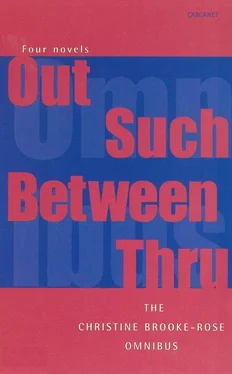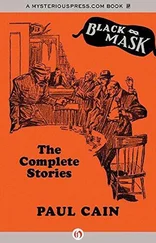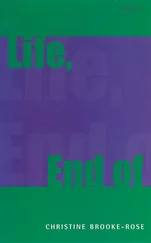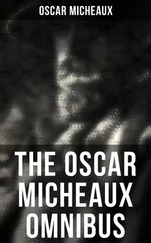Christine Brooke-Rose - The Brooke-Rose Omnibus
Здесь есть возможность читать онлайн «Christine Brooke-Rose - The Brooke-Rose Omnibus» весь текст электронной книги совершенно бесплатно (целиком полную версию без сокращений). В некоторых случаях можно слушать аудио, скачать через торрент в формате fb2 и присутствует краткое содержание. Год выпуска: 2012, ISBN: 2012, Издательство: Carcanet Press Ltd., Жанр: Современная проза, на английском языке. Описание произведения, (предисловие) а так же отзывы посетителей доступны на портале библиотеки ЛибКат.
- Название:The Brooke-Rose Omnibus
- Автор:
- Издательство:Carcanet Press Ltd.
- Жанр:
- Год:2012
- ISBN:9781847775757
- Рейтинг книги:5 / 5. Голосов: 1
-
Избранное:Добавить в избранное
- Отзывы:
-
Ваша оценка:
- 100
- 1
- 2
- 3
- 4
- 5
The Brooke-Rose Omnibus: краткое содержание, описание и аннотация
Предлагаем к чтению аннотацию, описание, краткое содержание или предисловие (зависит от того, что написал сам автор книги «The Brooke-Rose Omnibus»). Если вы не нашли необходимую информацию о книге — напишите в комментариях, мы постараемся отыскать её.
The Brooke-Rose Omnibus — читать онлайн бесплатно полную книгу (весь текст) целиком
Ниже представлен текст книги, разбитый по страницам. Система сохранения места последней прочитанной страницы, позволяет с удобством читать онлайн бесплатно книгу «The Brooke-Rose Omnibus», без необходимости каждый раз заново искать на чём Вы остановились. Поставьте закладку, и сможете в любой момент перейти на страницу, на которой закончили чтение.
Интервал:
Закладка:
— I am a gardener. I received Vocational Training at the Resettlement Camp after the displacement. Since then, however, I have only been intermittently employed.
— I am a gardener. I specialise in tending fig-trees. I eat the first crop of buds, in January, they make me strong and virile. I tend the second crop with secret knowledge handed down by generations.
— What does your letter say?
— I must report daily from 8 a.m.
— Nothing else?
— It’s a printed slip. The time is handwritten.
— Oh I see. Well, that’s lucky isn’t it? You could do with the benefit pills. It’s nice to hear from Joan. She always played the part of the fairy princess in the school play. And she’s done very well. You never know, she might be able to help you, indirectly I mean. Not that I’d ever ask her, but she takes an interest. Would you like some more gruel?
The white globules — sometimes it is sufficient simply to speak, to say no thank you, or yes please, as the case might be, for the sequence not to occur.
The black nodules on the bare branches of the fig-tree which, close up, does not look blasted, seem to represent the first crop of buds. A simple test would be to taste one, or even several. From here inside the curve of the downsweeping branch the sky is entirely filled with long grey twigs that poke into the eyebrow line topping the field of vision. In the lower part, on either side of the nose, the branches that bear the twigs are thick and grey and contorted. To the right of the nose, with the left eye closed, the thickest branch sweeps horizontally below the starting-line of the yellow grass patch, where Mrs. Ned’s shack begins. To the left of the nose, with the right eye closed, it underlines Mrs. Ned’s shack, as if Mrs. Ned’s shack were built on it. The fig-tree does not look blasted, for the rough grey bark is wrinkled in the bend of the trunk like a thigh of creased denim shot with darker thread. The rough grey bark is shot with black lines running parallel down the length of the thicker branches, in high relief but discontinuous and made up of black dots. These lines are interrupted by the thick transverse cracks where the trunk curves, or by crinkly craters where branches have been cut away. The smaller branches are like curved spines, knotty but smoother in between the bumps, and with the transverse lines more regularly marked. The dots are paler and more scattered. To the carelessly naked eye the dots of these smaller lines are not immediately visible. But a microscope would certainly reveal a system of parallel highways all along the branches in discontinuous black blobs like vehicles immobilised. Or neural cells perhaps.
The bud tastes sweetly insipid on the tongue, but sharper on the palate. One step forward and Mrs. Ned’s shack is framed in a trapeze of black twig and branch. The branch runs below, thickly, like a censored caption, and sweeps down to the right towards the grass, where the long grey twigs it bears grow first downwards and then curve up, in large U-letters. The buds taste distinctly sharper after they have passed beyond the taste-buds. The mimosas could just be in bloom.
Mrs. Ned’s shack grows big. A red and white blob floats in the darkness behind the verandah window, grows big and becomes presumably Mrs. Ned, though without a head. The rectangular frame of the verandah is itself still held in the rounded frame formed by the line of the eyebrow and the line of the nose, to the left of the nose with the right eye closed, to the right of the nose with the left eye closed; below, there is the invisible but assumed line of the cheek, which becomes visible only with a downward look that blurs the picture. The frame of the verandah expands beyond the rounded field of vision as Mrs. Ned grows unmistakably into Mrs Ned, who is ironing in the small front room. She bends her white face downwards, more than is perhaps necessary for ironing, and shows therefore mostly the top of her brown head, with the thin untidy hair emerging now from the dark background. She is cut across the chest by an oblong bar of light reflected in the glass. The frame of the verandah engulfs as Mrs. Ned looks up and smiles, with eyebrows raised perhaps more than is necessary for the occasion. A camera with a telescopic lens used on approach might perhaps have revealed that Mrs. Ned had in fact looked up and out of the verandah door, but only to the human mind behind the lens, and besides, the rigging up or even the mere carrying, at eye-level, of such a camera, if one had been available, would have caused Mrs. Ned to look up, thus proving nothing. The bar of oblong light reflected in the glass vanishes. Mrs. Ned is no longer cut in half but framed by the open door, whole and unmistakably Mrs. Ned, in a white apron and red cardigan. The cardigan’s collar half hides the goitre to the left of the neck.
A conversation occurs.
The ironing-board rests on the backs of two kitchen chairs. The smell is of steamed soap. A basket of unironed things lies on the floor to the right of the ironing-board. To the right of the verandah door, facing Mrs. Ned, a crisp white overall hangs on a hanger from the left hand knob on the top drawer of the tall dark chest of drawers. A shining but faded green blouse hangs from the other knob. And over the big brass double-bed in the left corner behind Mrs. Ned clothes and towels are neatly folded and regimented. Mrs. Ned’s four grown daughters, who are out in service, use the bed in turns of two and Mrs Ned sleeps in the small back room. Alternatively three of the four grown daughters who are out in service sleep in the big brass double-bed, the fourth sharing the small back room with Mrs. Ned. Or two, and two, Mrs. Ned using the big brass double-bed perhaps. The walk look like the surface of the moon. The smell is of steamed soap. The hard eyes stare but strike an octave. At most a tonic chord. The phrase what a surprise has come and gone, unless perhaps it formed part of the merely tonic chord, the expected notes, which have not in fact been played.
— if you don’t mind, I mean.
— No, I don’t mind.
The tall dark chest of drawers is pocked with worms. The passage, with walls at right angles where curving is desired, is almost cubic in its brevity. The smell of soap remains behind as the nose follows Mrs. Ned, who smells of freshly chopped onions and washing-up water. Her legs are thin and very white, which, in a black man’s world, has more than adulterous appeal, the tender, incestuous appeal of love within minorities. To the left, the kitchen is not luminous, nor is it framed in red. The kitchen is spick and span but colourless and Mrs. Ned herself smells of freshly chopped onions, sweat and washing-up water. Her arms throw her voice about, it rebounds against the walls and she catches it. The kitchen is colourless and mottled. The hanging beads over the doorway are mottled and make a crackling sound.
— So you see this top bit keeps coming off and that’s just where I beat the washing, it can’t take the strain I suppose.
The wash-tub is a rounded hollow of zinc encased in dark sodden wood which has cracked. Along the top in front. A new but bent board of thin wood lies on the ground in front of the tub, with nails sticking out of it. Next to it lies a hammer.
Sooner or later the bent board of thin soft wood will embrace the tub. The eyes of Mrs. Ned strike a tonic chord of expected notes. The arms no longer throw the voice about, the voice is quiet and the white arms naked to the elbow rest along the edge of the tub. The vertical upper arms, after the elbow, are wrapped in red and the fresh air absorbs the smell of washing-up water and sweat. The red cardigan partly conceals the goitre on the neck. Sooner or later a movement will have to be made. The kitchen, through the hanging beads, is dark.
Читать дальшеИнтервал:
Закладка:
Похожие книги на «The Brooke-Rose Omnibus»
Представляем Вашему вниманию похожие книги на «The Brooke-Rose Omnibus» списком для выбора. Мы отобрали схожую по названию и смыслу литературу в надежде предоставить читателям больше вариантов отыскать новые, интересные, ещё непрочитанные произведения.
Обсуждение, отзывы о книге «The Brooke-Rose Omnibus» и просто собственные мнения читателей. Оставьте ваши комментарии, напишите, что Вы думаете о произведении, его смысле или главных героях. Укажите что конкретно понравилось, а что нет, и почему Вы так считаете.












